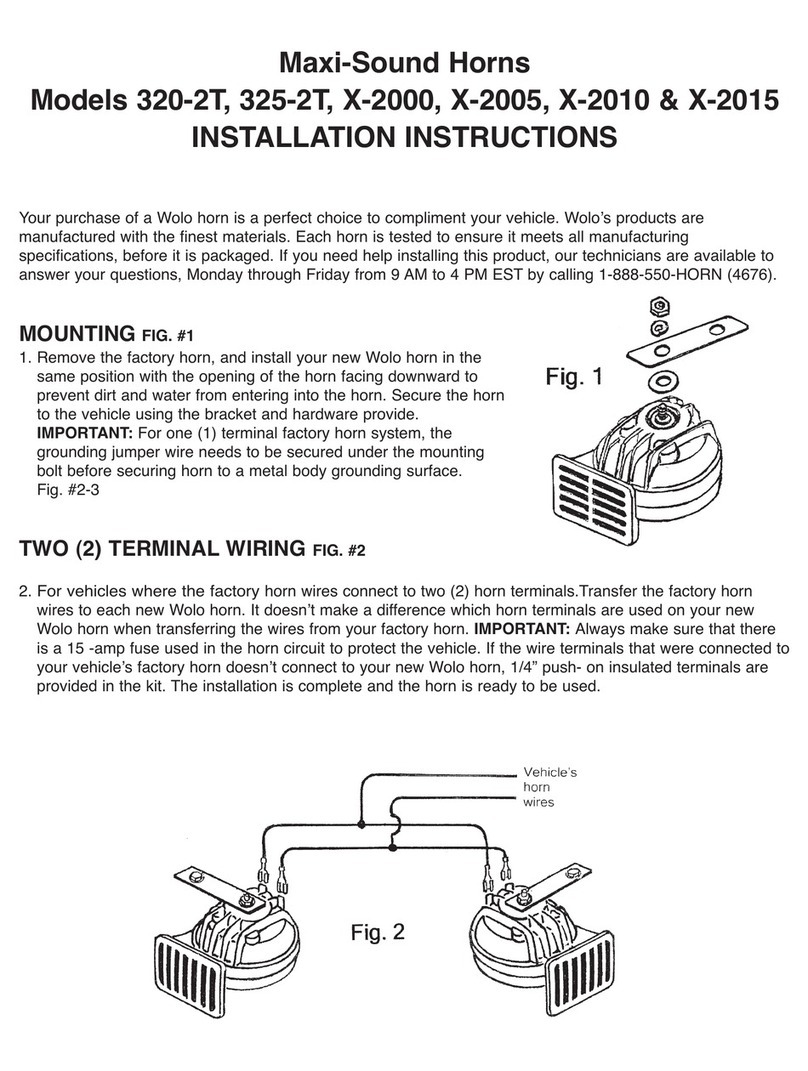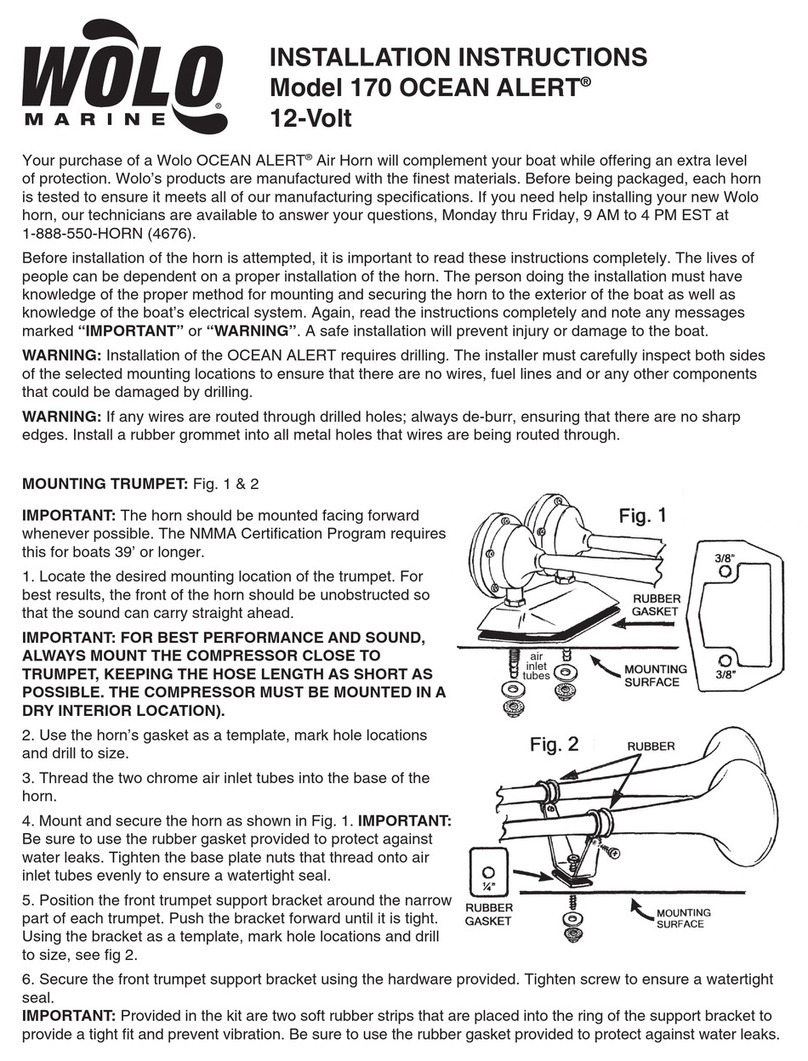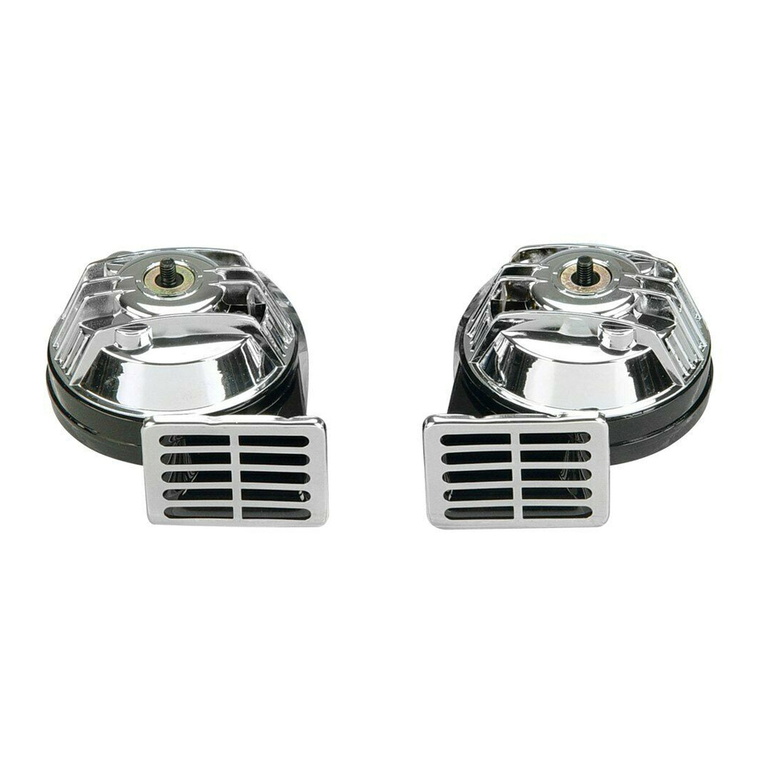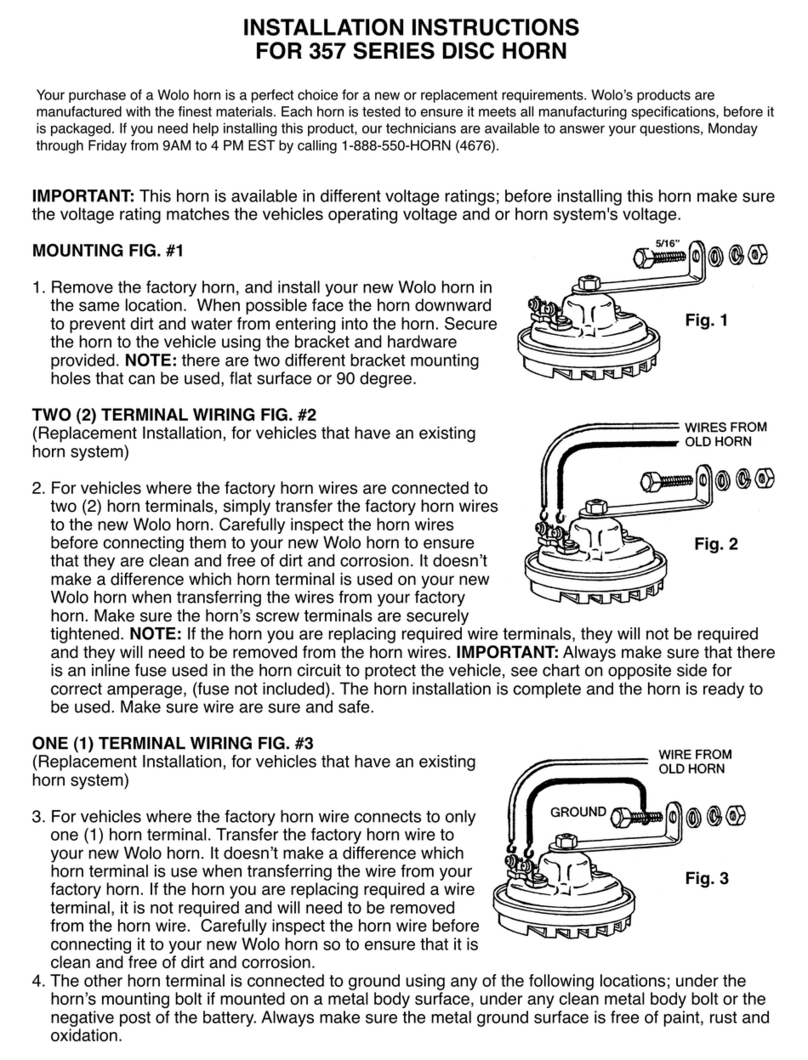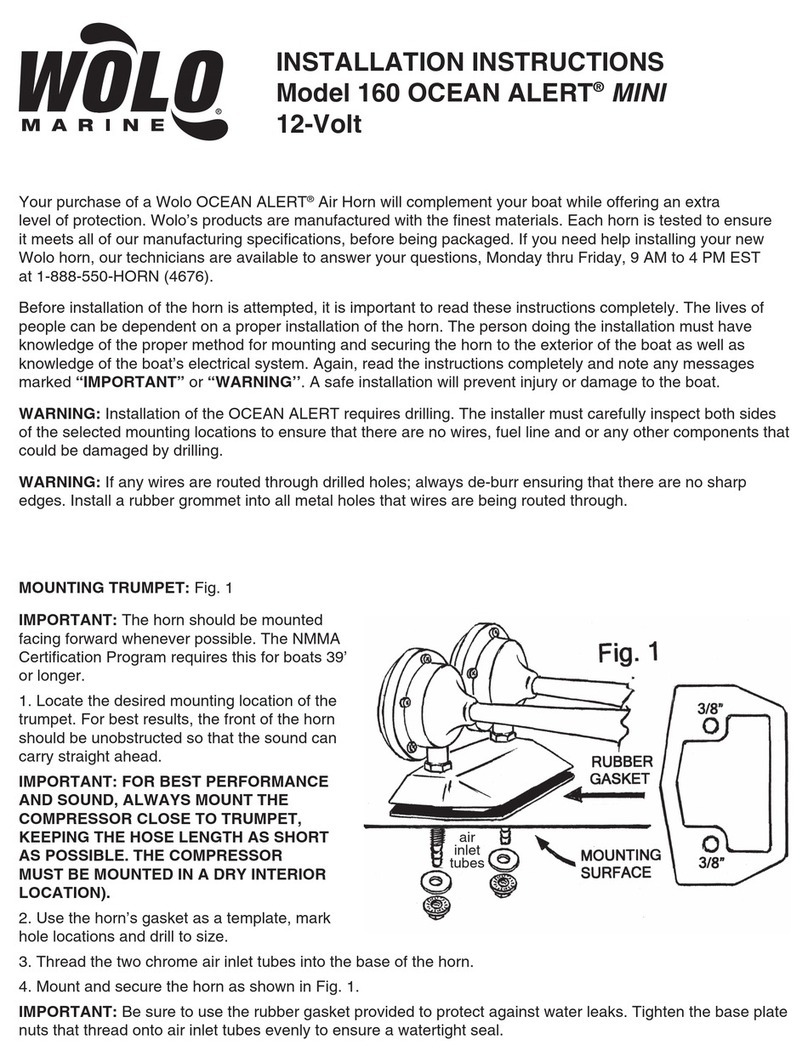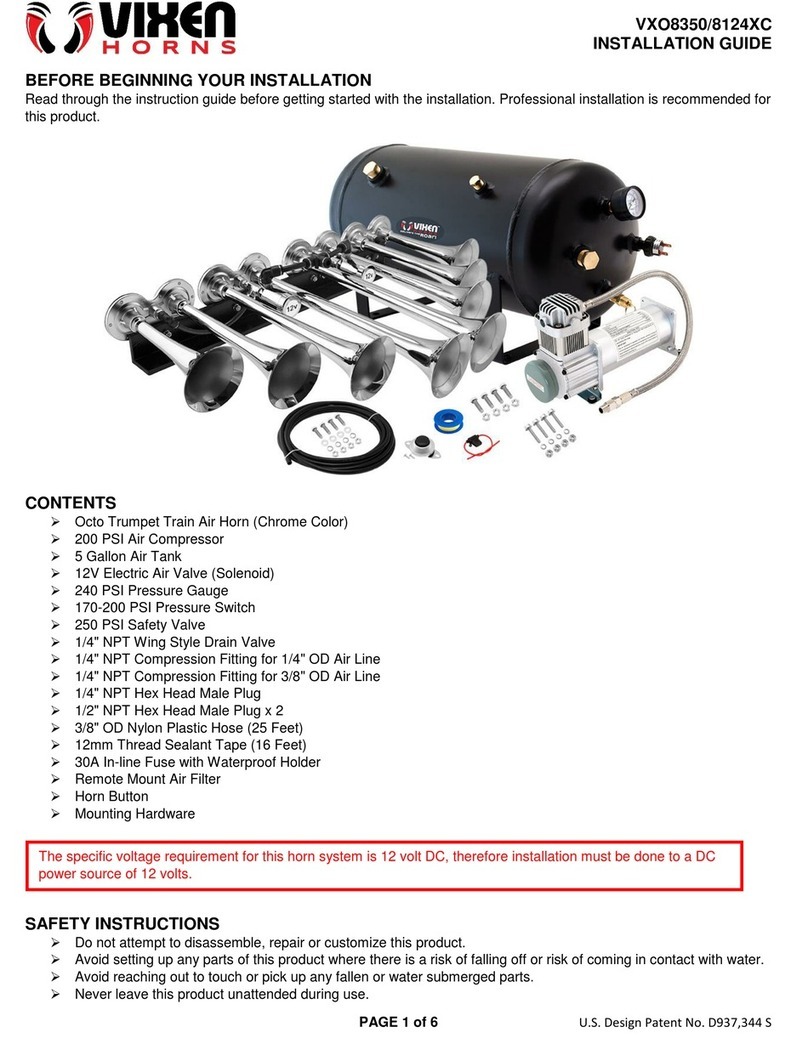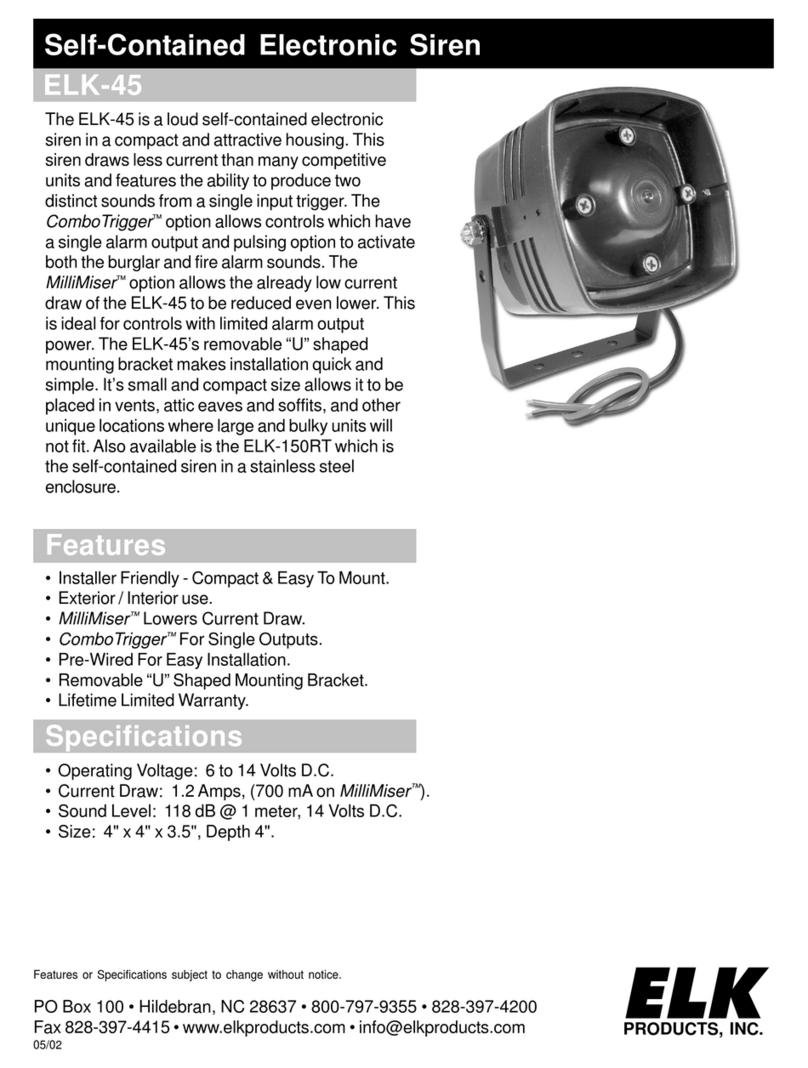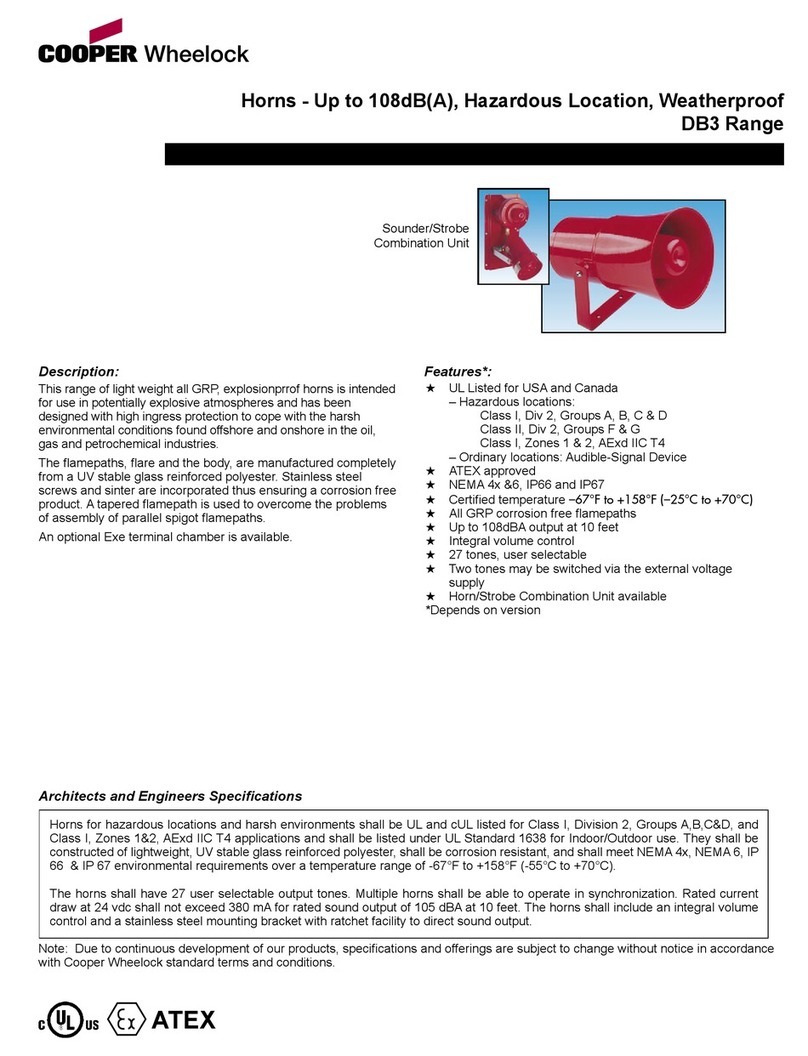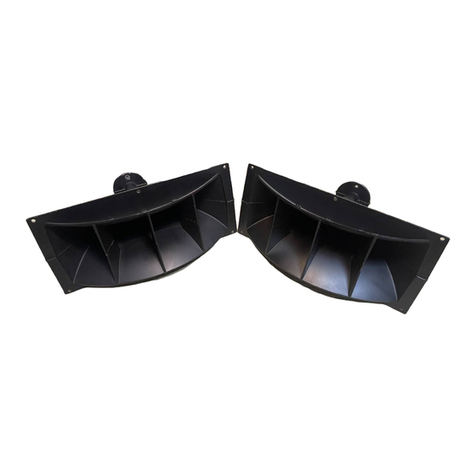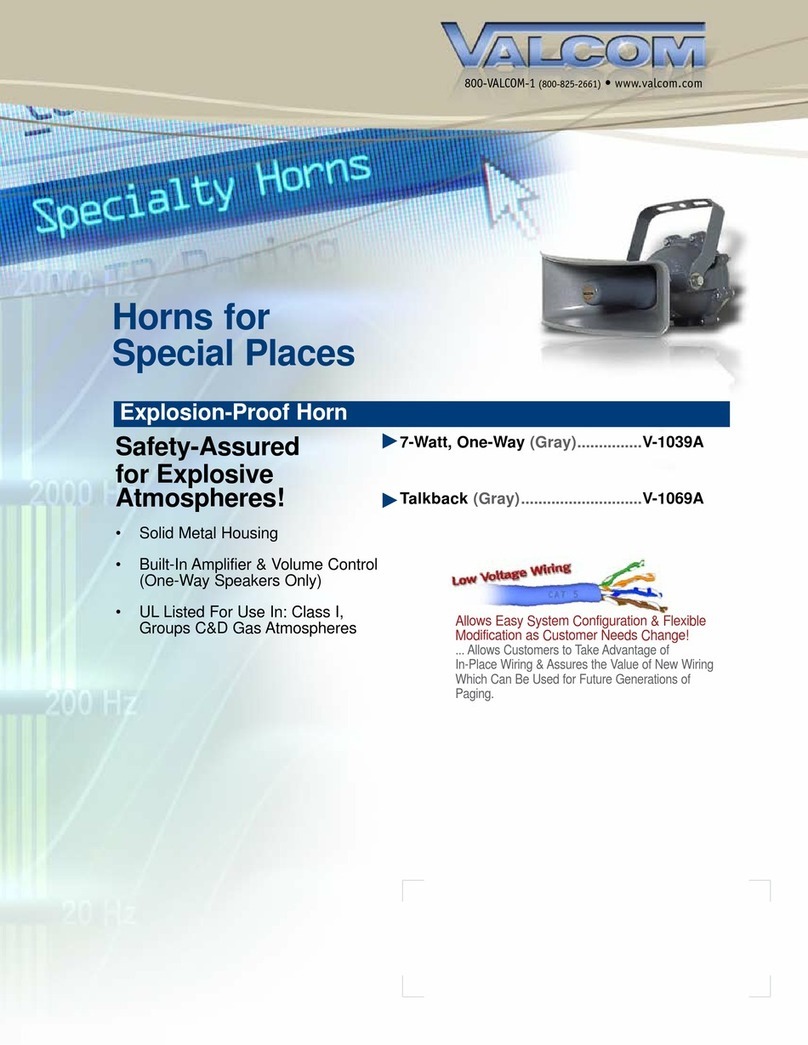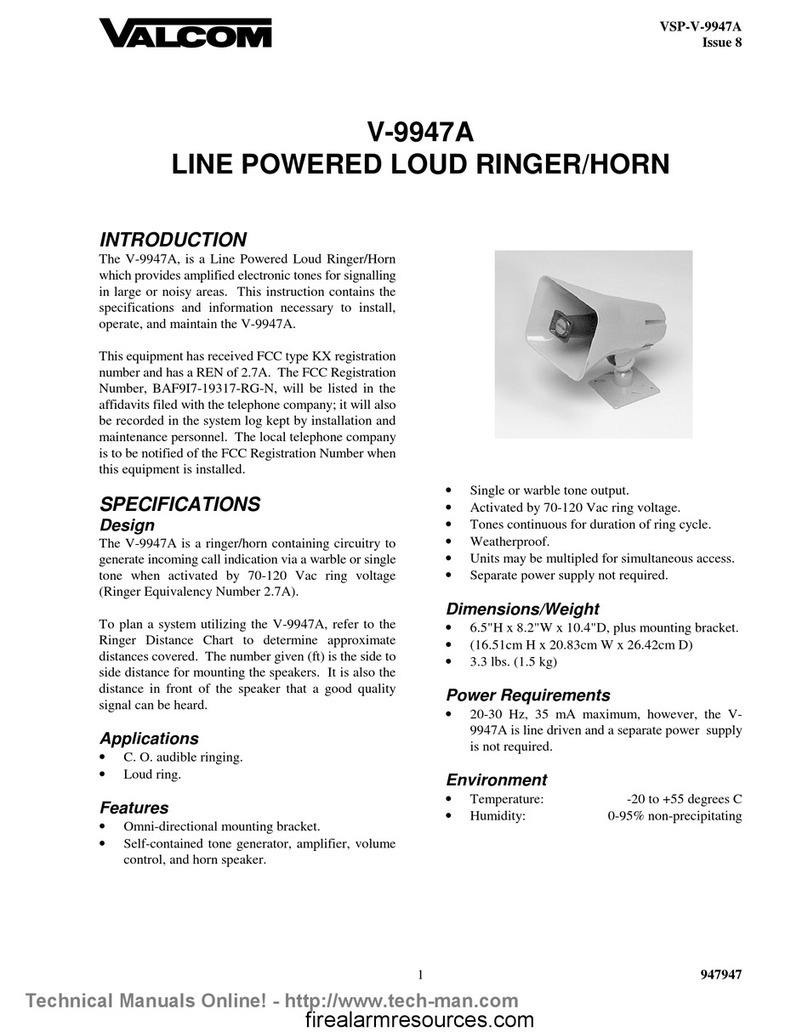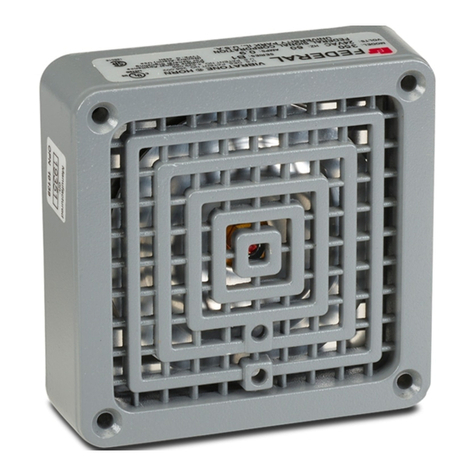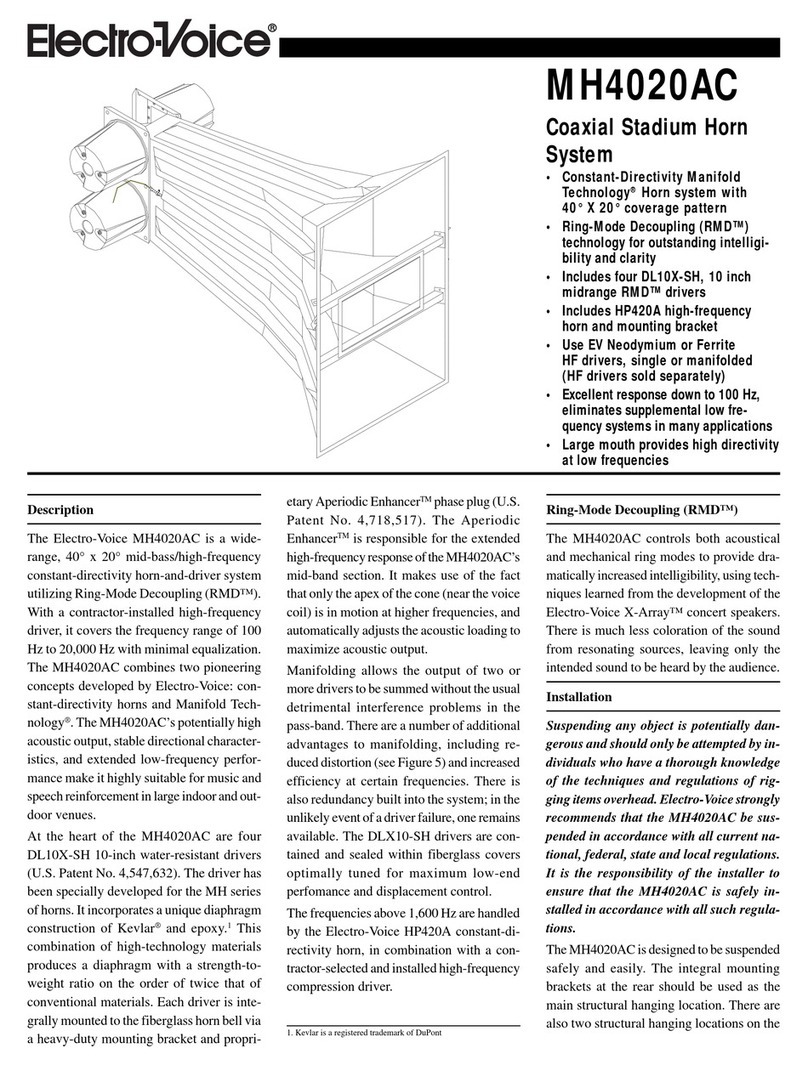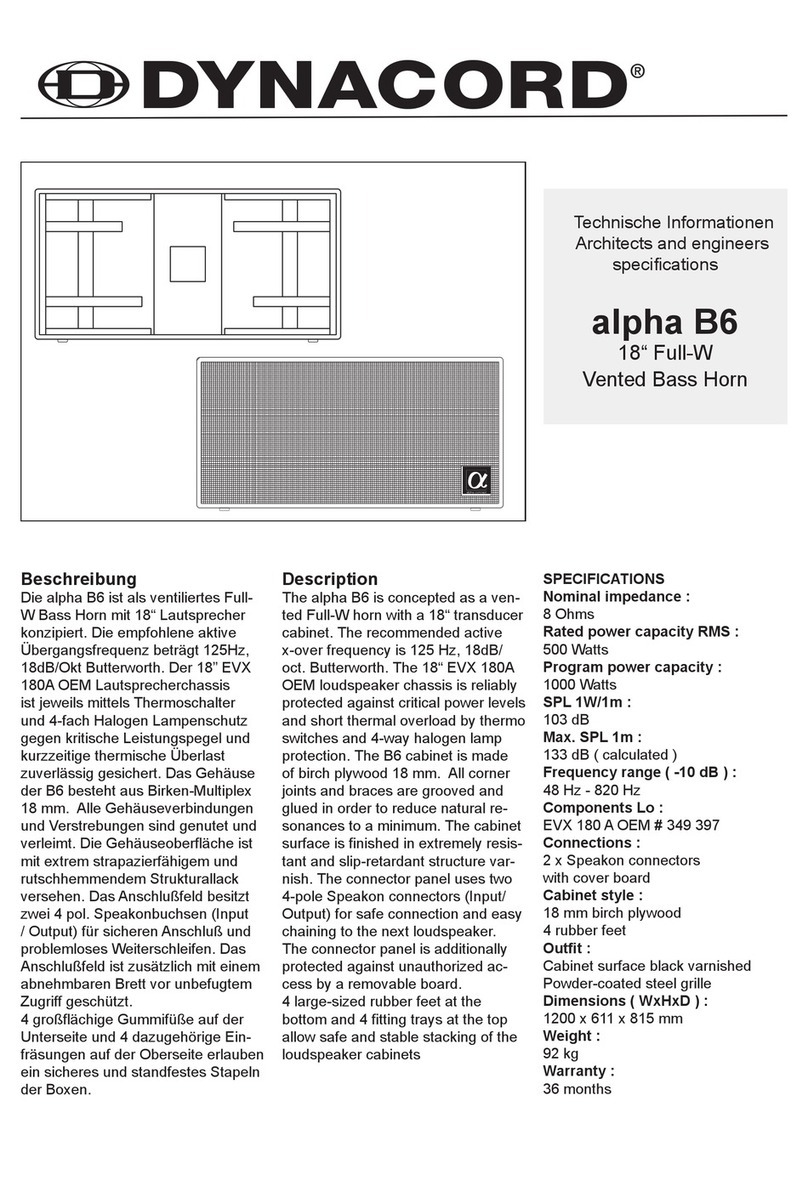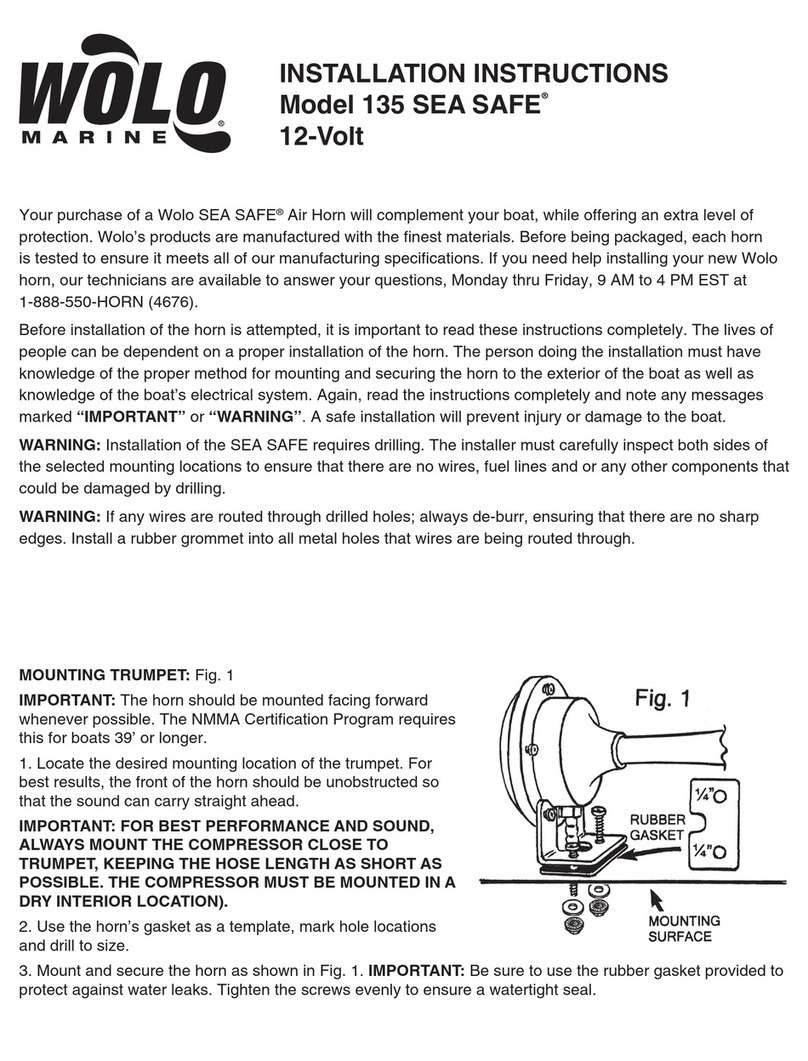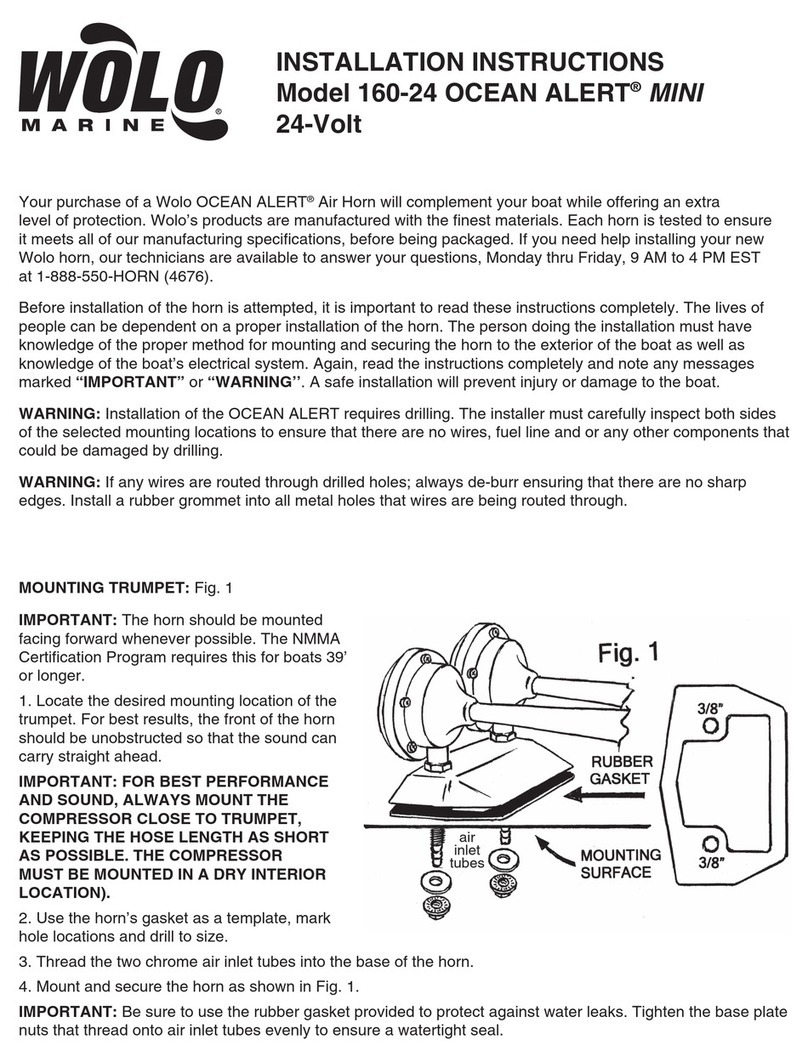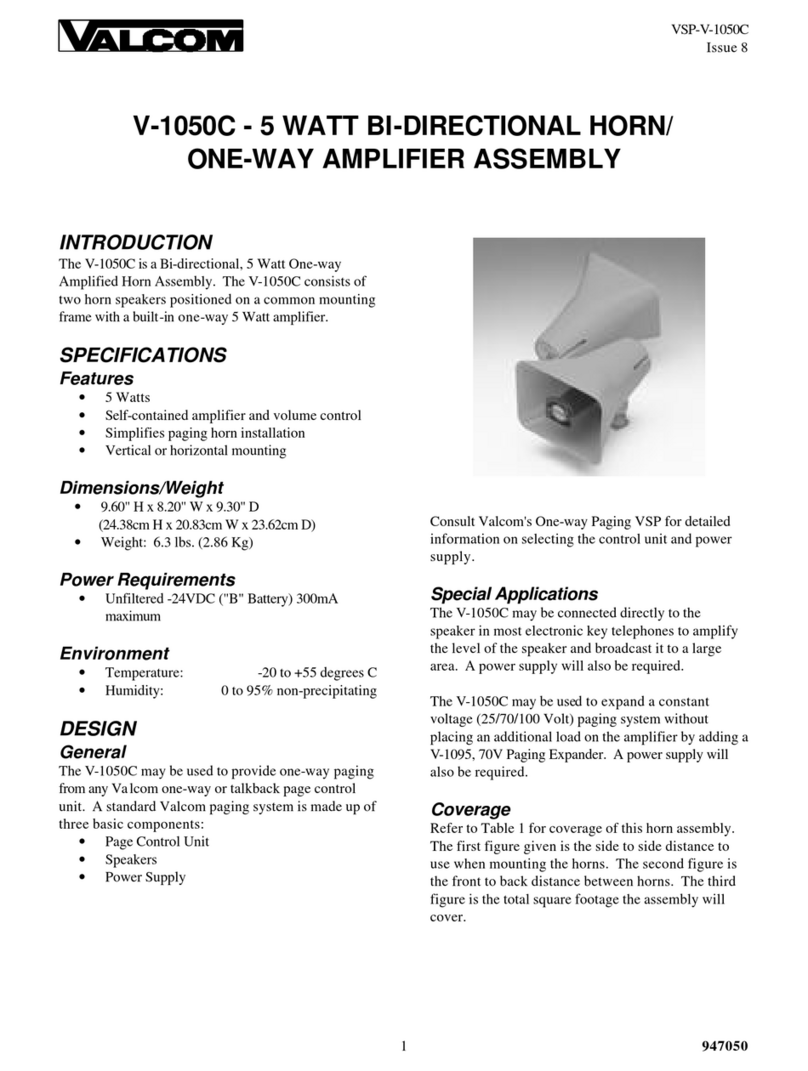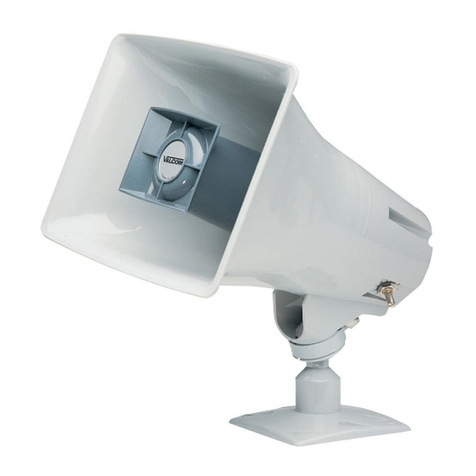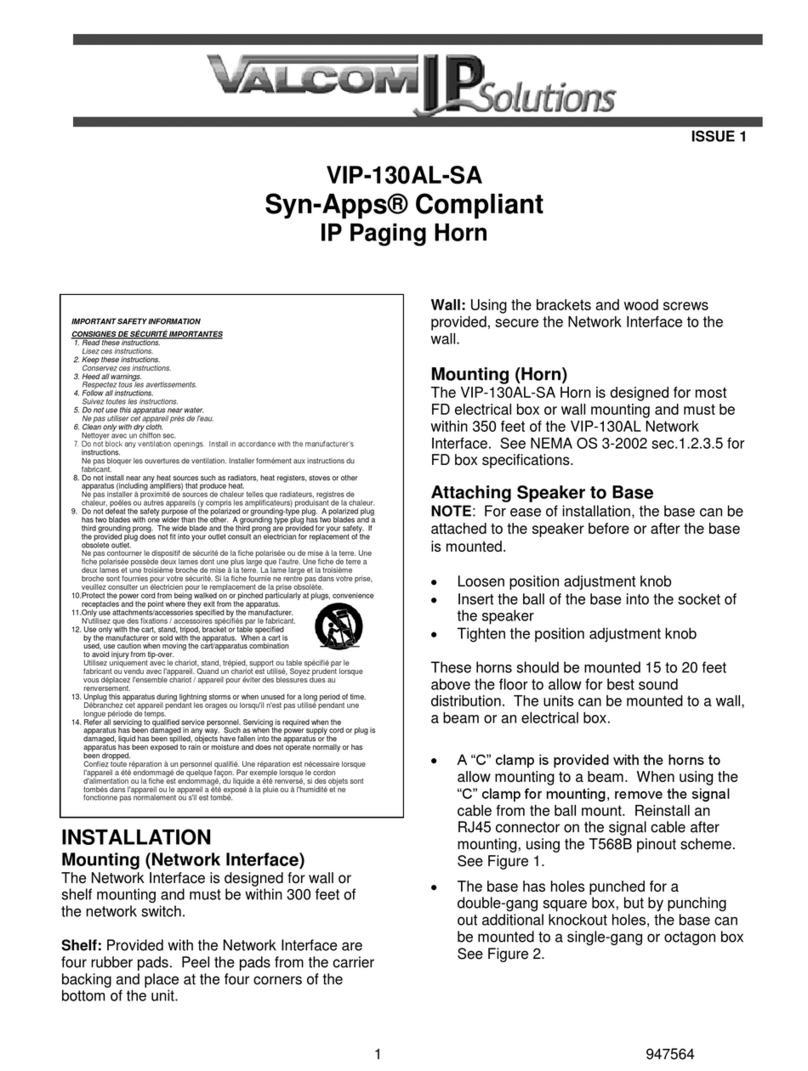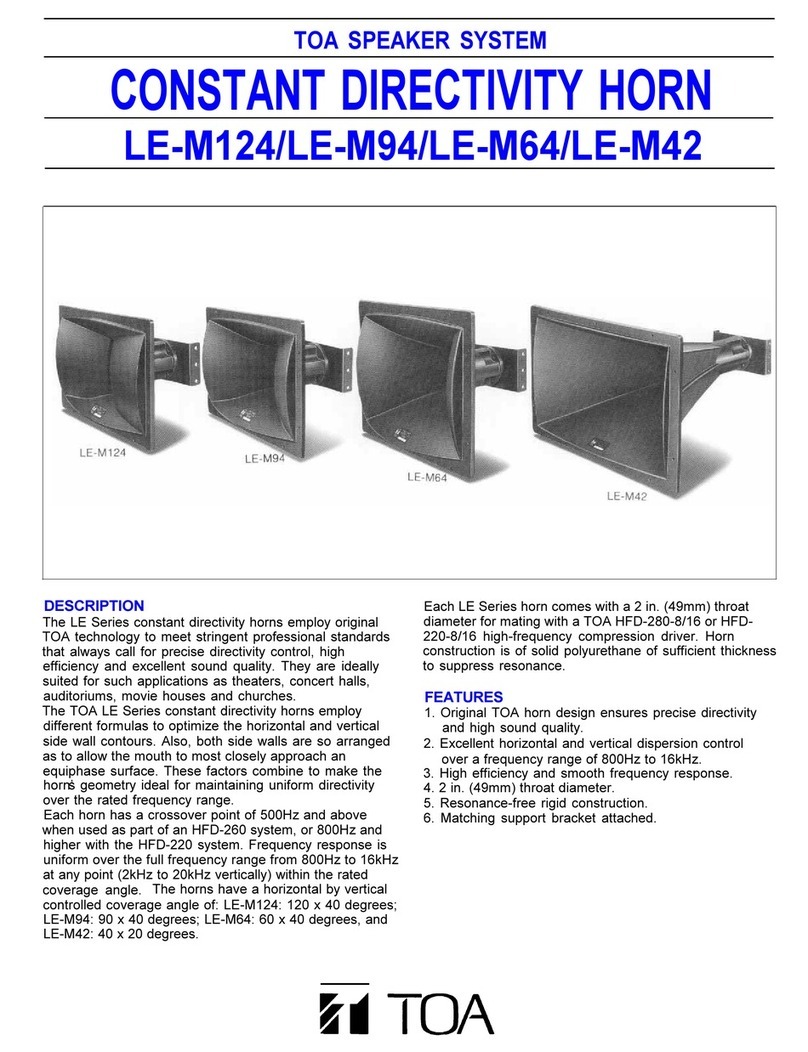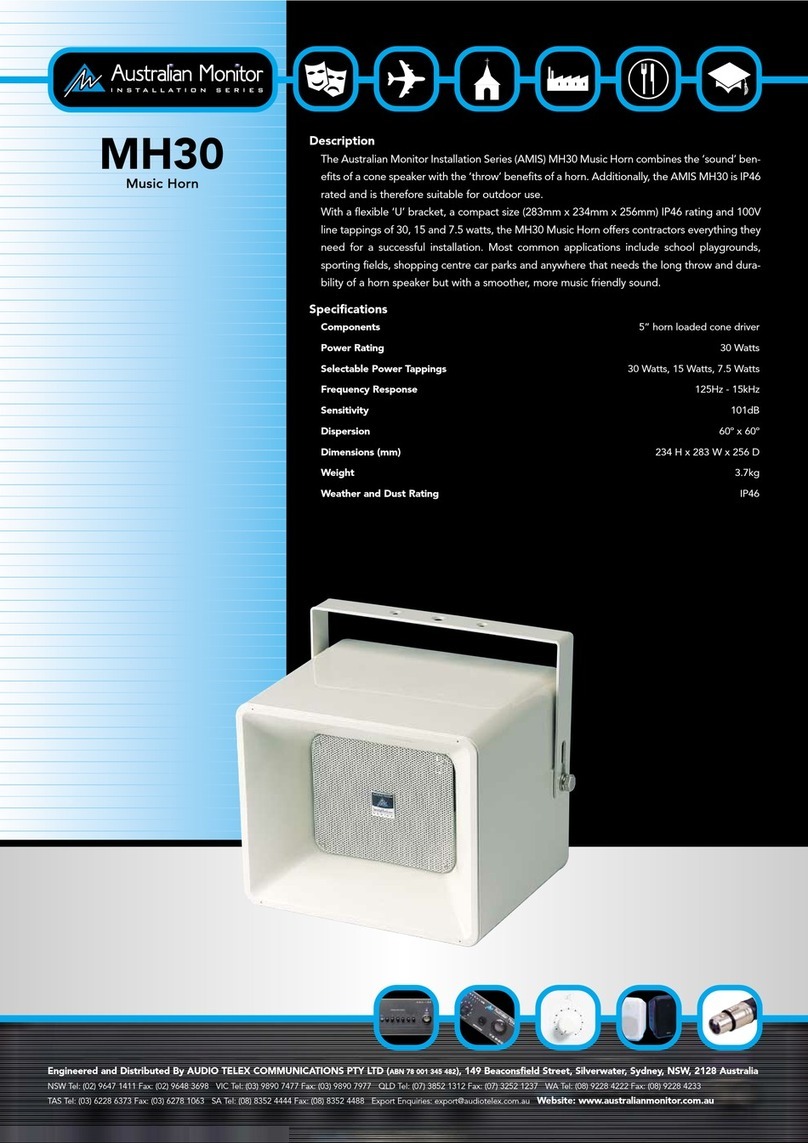
Your purchase of a Wolo OCEAN ALERT®Air Horn will complement your boat while offering an extra level
of protection. Wolo’s products are manufactured with the finest materials. Before being packaged, each horn
is tested to ensure it meets all of our manufacturing specifications. If you need help installing your new Wolo
horn, our technicians are available to answer your questions, Monday thru Friday, 9 AM to 4 PM EST at
1-888-550-HORN (4676).
Before installation of the horn is attempted, it is important to read these instructions completely. The lives of
people can be dependent on a proper installation of the horn. The person doing the installation must have
knowledge of the proper method for mounting and securing the horn to the exterior of the boat as well as
knowledge of the boat’s electrical system. Again, read the instructions completely and note any messages
marked “IMPORTANT” or “WARNING’’. A safe installation will prevent injury or damage to the boat.
WARNING: Installation of the OCEAN ALERT requires drilling. The installer must carefully inspect both sides
of the selected mounting locations to ensure that there are no wires, fuel lines and or any other components
that could be damaged by drilling.
WARNING: If any wires are routed through drilled holes; always de-burr, ensuring that there are no sharp
edges. Install a rubber grommet into all metal holes that wires are being routed through.
MOUNTING TRUMPET: Fig. 1 & 2
IMPORTANT: The horn should be mounted facing forward
whenever possible. The NMMA Certification Program requires
this for boats 39’ or longer.
1. Locate the desired mounting location of the trumpet. For
best results, the front of the horn should be unobstructed so
that the sound can carry straight ahead.
IMPORTANT: FOR BEST PERFORMANCE AND SOUND,
ALWAYS MOUNT THE COMPRESSOR CLOSE TO
TRUMPET, KEEPING THE HOSE LENGTH AS SHORT AS
POSSIBLE. THE COMPRESSOR MUST BE MOUNTED IN A
DRY INTERIOR LOCATION).
2. Use the horn’s gasket as a template, mark hole locations
and drill to size.
3. Thread the two chrome air inlet tubes into the base of the
horn.
4. Mount and secure the horn as shown in Fig. 1.
IMPORTANT: Be sure to use the rubber gasket provided to
protect against water leaks. Tighten the base plate nuts that
thread onto air inlet tubes evenly to ensure a watertight seal.
5. Position the front trumpet support bracket around the narrow
part of each trumpet. Push the bracket forward until it is tight.
Using the bracket as a template, mark hole locations and drill
to size, see fig 2.
6. Secure the front trumpet support bracket using the hardware provided. Tighten screw to ensure a watertight
seal.
IMPORTANT: Provided in the kit are two soft rubber strips that are placed into the ring of the support bracket to
provide a tight fit and prevent vibration. Be sure to use the rubber gasket provided to protect against water leaks.
INSTALLATION INSTRUCTIONS
Model 170-24 OCEAN ALERT®
24-Volt
air
inlet
tubes
